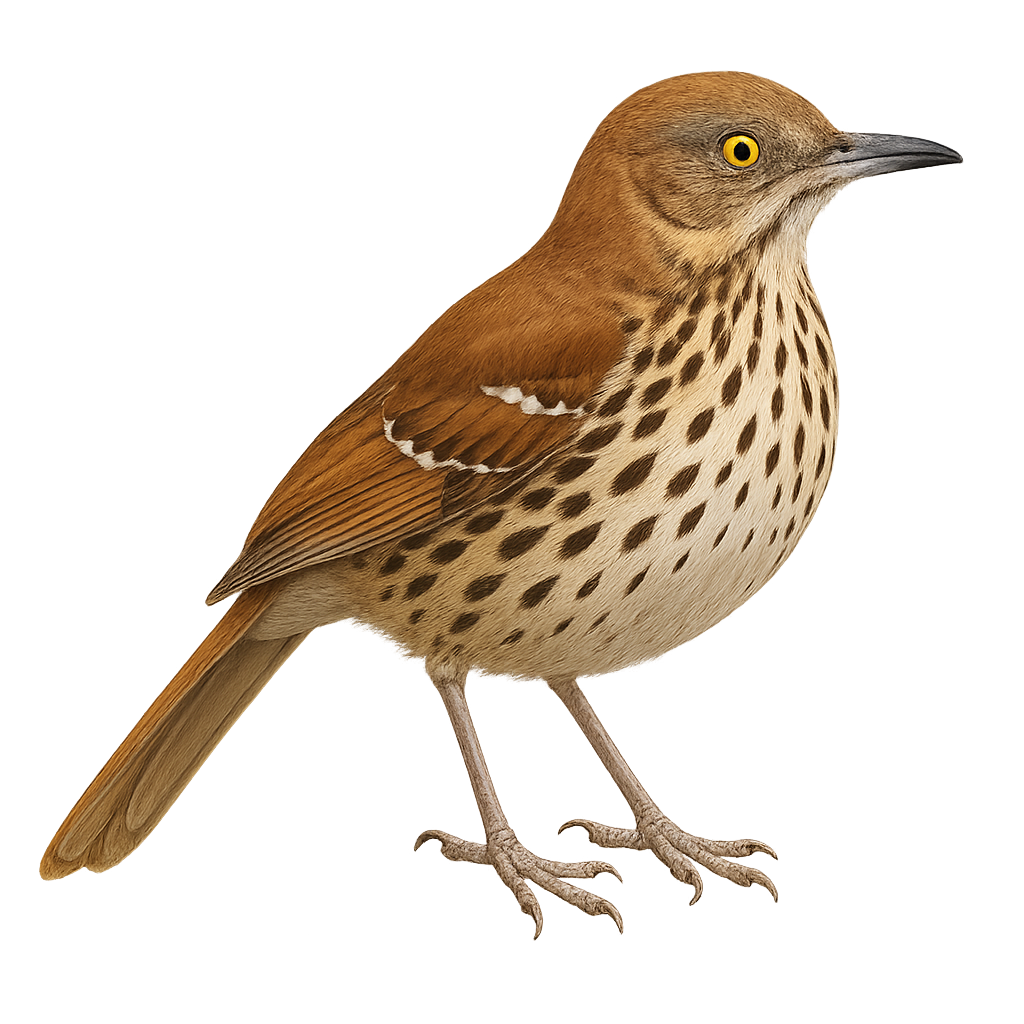Your wildlife photography guide.
Explore the brown thrasher in detail, study its behavior, prepare your shots.
Where to observe and photograph the brown thrasher in the wild
Learn where and when to spot the brown thrasher in the wild, how to identify the species based on distinctive features, and what natural environments it inhabits. The WildlifePhotographer app offers tailored photography tips that reflect the brown thrasher’s behavior, helping you capture better wildlife images. Explore the full species profile for key information including description, habitat, active periods, and approach techniques.
Brown Thrasher
Scientific name: Toxostoma rufum

IUCN Status: Least Concern
Family: MIMIDAE
Group: Birds
Sensitivity to human approach: Suspicious
Minimum approach distance: 10 m
Courtship display: April to June
Incubation: 12-14 jours
Hatchings: April to July
Habitat:
open forests, thickets, gardens
Activity period :
Primarily active during the day, with peak activity in the morning and late afternoon.
Identification and description:
The Brown Thrasher, Toxostoma rufum, is a medium-sized bird known for its reddish-brown plumage and piercing yellow eyes. It is primarily found in North America, inhabiting open forests, thickets, and gardens. This bird is famous for its melodious and varied song, often mimicking other species. It feeds mainly on insects, fruits, and seeds. The Brown Thrasher is territorial, especially during the breeding season, vigorously defending its area. It builds its nest in bushes or low trees, using twigs and leaves. Although generally discreet, it can become aggressive if threatened.
Recommended lens:
400 mm – adjust based on distance, desired framing (portrait or habitat), and approach conditions.
Photography tips:
To photograph the Brown Thrasher, it is advisable to use a 400mm lens or longer to capture fine details without disturbing the bird. Look for it in open forests and thickets, where it is often active on the ground. Be patient and discreet, as this bird is suspicious and may fly away quickly if disturbed. Use a tripod to stabilize your camera and adjust the shutter speed to capture its lively behavior.
The WildlifePhotographer App is coming soon!
Be the first to explore the best nature spots, track rutting seasons, log your observations, and observe more wildlife.
Already 1 429 wildlife lovers subscribed worldwide

